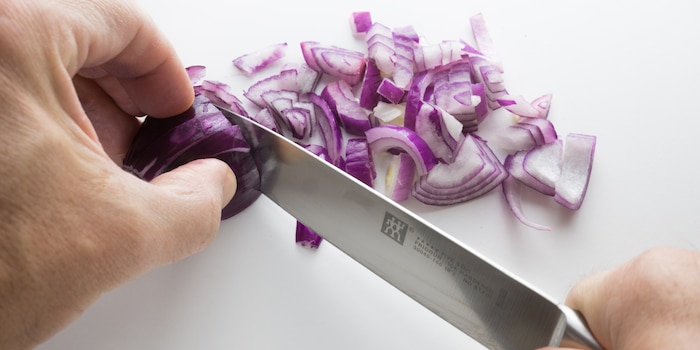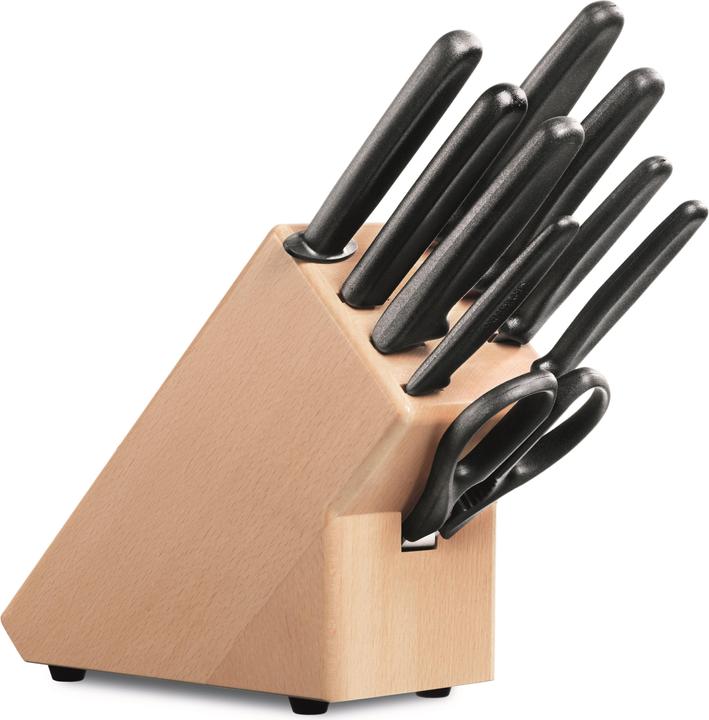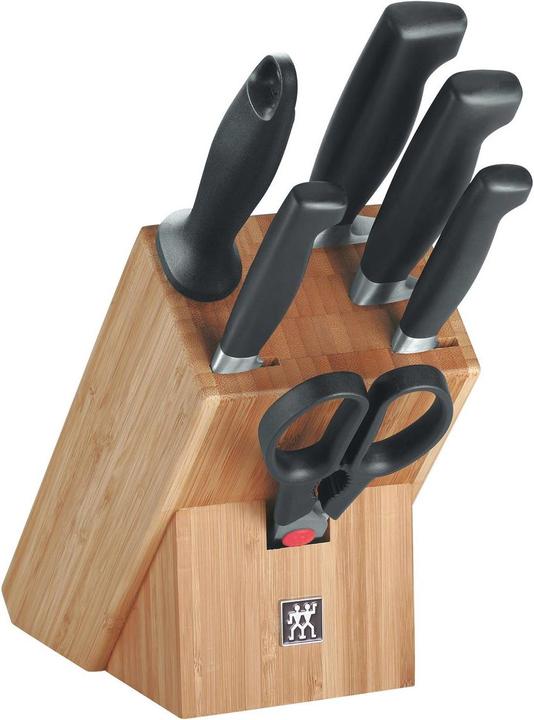

Knife catalogue: for better cutting!
Juicy meat, crunchy vegetables, crusty bread, fresh herbs - the right equipment makes preparation easy. Find out here what kind of knife you need.
Chefs knife - the classic
Uses: cutting, chopping, mincing
Foods: meat, fish, vegetables
Every kitchen needs one. The classic chef's knife can be used for a variety of cutting tasks. It is suitable for thicker pieces of meat or fish, but also for hard vegetables. It is easily recognised by its long blade. It generally measures between 20 and 28 cm, and is therefore significantly longer than a utility knife blade.
Santoku knife - the knife of the three virtues
Uses: cutting, chiselling
Foods: meat, fish, vegetables, herbs
The santoku is a popular multi-purpose Japanese knife. Compared to European cutting utensils, the Asian santoku knife is wider and has a sharp blade on both sides. It is often made from Damascus steel, one of the strongest materials available. This knife is as popular with professional chefs as it is with ambitious amateur cooks. The Japanese term "santoku" (san = three, toku = virtues), which gives this knife its name, refers to its positive properties when cutting meat, fish and vegetables.
Peeling knife - small and practical
Uses: peeling, cutting, coring
Food: vegetables, fruit
The turning and paring knife can be recognised by its short, beak-shaped blade. It is perfectly suited to cutting, peeling and coring fruit and vegetables.
Bread knife - for clean, even slices
Uses: cutting, slicing
Food: bread, roast, hard fruit
The bread knife has a long serrated blade. A serrated blade means a saw-toothed blade. So you'll be able to slice your loaf of bread neatly and easily.
The bread knife has a long serrated blade.
Universal knife - pure versatility
Use: fine cutting, coring
Foods: fine meat, fish, fruit, vegetables, herbs
With a length of 8 to 15 cm, the universal knife embodies versatility in the kitchen. It is significantly smaller and easier to handle than a chef's knife. This makes it ideal for preparation tasks such as peeling fruit or slicing aromatic herbs.
You'll find over 800 knives here.
Lots of knives - best sellers
With these knife sets, you'll be all set for any occasion.
Anatomy of a knife

1. Blade tip: for small cuts (e.g. garlic, onions or mushrooms)
2. Back of blade: for opening shellfish or breaking small bones
3. Blade: for flattening fillets or picking up herbs
4. Blade wire: is decisive for the sharpness of the blade and stability when cutting
5. Heel: for chopping food requiring a lot of force
. 6. Silk: an extension of the blade for a good grip and balance
7. Handle: an ergonomic handle for comfortable cutting
Steel knives or ceramic knives
Steel knives still remain the favourite knives of professional and amateur cooks alike. There are various degrees of steel hardness. It is calculated according to the Rockwell hardness scale. It's no secret that Japanese knives are the hardest in the world. Damascus steel, which is particularly hard, is an alloy of several types of steel and iron. With frequent use, be sure to sharpen your knives regularly.
Ceramic knives are made from a powder pressed into a mould and fired. The high pressure and heat give these knives their extreme hardness. Compared with steel knives, they retain their sharpness for several years. They are also lighter, have a smooth blade and can be machine washed. They should not be used on frozen food. As hard as the blade is, it can break if you drop it or put too much pressure on the side.
Practical tips in addition
Maintenance
It's best to hand clean and dry your knives immediately after use. If you still want to machine wash them, make sure you don't exceed a temperature of 55 degrees. If you wait too long before washing your knives, acidic food residues can attack the blade.
Storage
Store your knives in safe places. A knife block or a magnetic bar are the best options. They ensure your knives don't get scratched or cut.
Sharpening
Even a very well-made steel knife loses its sharpness over time. There's no escaping sharpening. A knife is sharp when it can easily cut a sheet of paper. If you want to sharpen your knives yourself, you can do so with a sharpening rifle or a sharpening stone.
Here you will find practical demonstration videos: sharpening with a rifle, sharpening with a stone
You may also be interested in these articles:
As a photographer, human being and dad, I tell stories as close to life as possible. With all its corners, emotions and uniqueness.










